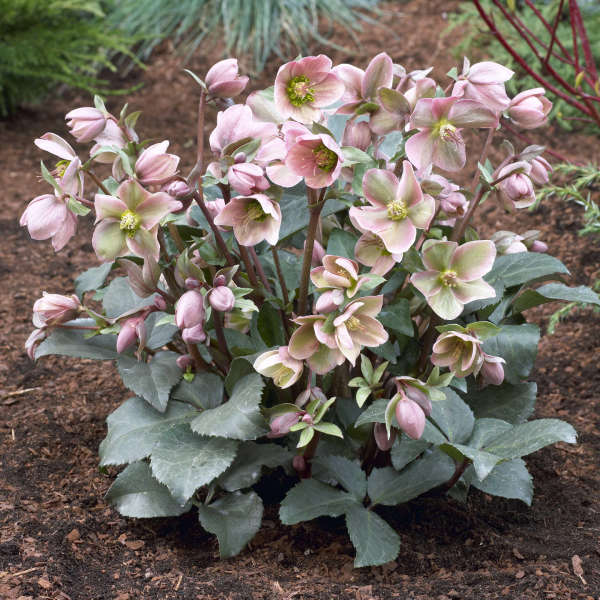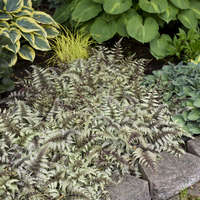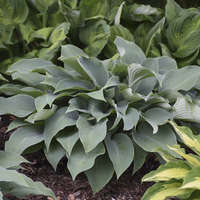Helleborus ANGEL GLOW® ('BLT02' PP21093)
Common Name: Lenten Rose
This first year blooming hellebore is notable for its vigorous yet compact growth habit and abundance of pink flowers which appear very early in the season, from mid-winter through early spring.
Clusters of 6-9 pink buds open to light pink flowers which take on green tones as they age. The softly colored blossoms blend nicely with the frosty blue-green, somewhat glossy foliage.
Hellebores are the harbingers of spring, blooming for six weeks or more beginning in late winter. They are often flowering during the Christian season of Lent, from which they get their common name, Lenten Rose. This is the perfect plant for naturalizing in moist, woodland areas where its extensive root system will spread as far as it is allowed.


